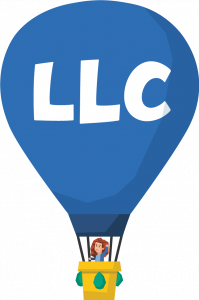The Northwest Guide to Writing a Business Plan
You’ve decided to take the leap and start your own business. Congratulations! But now you’re left wondering how you get from your business idea to an actual live business. It’s time to start drawing up a plan. Our guide shows you what a business plan is, what it does, why you need one, and how to make your business plan (and business) come to life.

What is a Business Plan?
A business plan is essential for securing funding from friends, family, banks, and other investors. A well thought out plan demonstrates how serious you are about starting a business, and outlines the potential for profitability as well as the inherent risk of opening a business. But it does more than that. A business plan helps the emerging business owner work through what the business will look like, how it will operate, and what its goals are for both the short and long term.
The purpose of a business plan is two-fold. First, your business plan will guide you through each step of managing and scaling up your business, helping you to reach key milestones and avoid issues as you grow. Second, having a well-thought-out business plan can help you obtain necessary funding by showing loan officers and potential investors that you’re serious about doing business right.
Technically, no. If you’re a sole proprietor or have a single-member LLC just selling crafts or doing a little consulting, you could get away with not having a business plan. And, of course, business plans aren’t legally required in any state. But if you want to dig into the details, crunch some numbers and find out if your idea can turn a profit, writing a business plan can help.
You sure can. In fact most small business owners who write lean plans create their own business plans. Of course you can always hire someone to do it for you, but that costs money. Plus, if you’re using your business plan to secure funding from family and friends, they want to hear you describe your vision for the business.
A good business plan should be clear, well-researched, and realistic. It should include relevant information and implementable strategies that you can use to establish and develop your business. It needs to catch the imagination of the reader, who in most cases is a potential investor. The length of your plan should mirror the size of business you plan to start. For example, if you’re starting a taco truck, your business plan doesn’t need to be overly long. However, if you’re starting a space rocket company that’s going to need significant investment, you’d do well to write a longer in-depth plan that covers all the bases and digs deep into your business and it’s long-term goals.

Types of Business Plans
There are several types of business plans, including annual, strategic, one-page, and internal only business plans. Below, we’ll cover the two types of business plans used by most new entrepreneurs: the traditional business plan and the lean business plan.
Traditional Business Plan
A traditional business plan is pretty long and can clock in at around 40 pages for some businesses. A traditional business plan covers all the bases in great detail, including describing your business goals, business structure, products and services, financial situation and outlook, and marketing opportunities.
Why gather and present all of this information up front? Often, it’s to secure funding. If you’re looking to prime the pump with some serious capital, you’re going to need to prove to investors that your business is financially viable. You need to show how and when you’ll be able to pay back your investment or how much they stand to profit by investing in your company. For example, if you intend to start a corporation your initial stockholders will want to know what kind of return they can expect on their investment.
Whether you’re looking for funding or not, you can also use a comprehensive business plan to maximize profits. It will provide you with in-depth knowledge of your strengths and weaknesses as a company along with your market outlook and competition. This will help you decide where to focus your time and energy as you build your business.
Lean Business Plan
A lean business plan is a pared-down version of the traditional business plan. In fact, a lean business plan may only be a page long, utilizing bullet points and bare-bones descriptions. Providing a birds-eye view of your company, its guiding strategies, and your market, the lean business plan is well-suited for start-ups and small businesses.
Lean business plans are beneficial if your business plan is for internal use only. For example, if you intend to start an LLC, and you’re not seeking funding, you don’t need to spend a lot of time crafting a traditional business plan. You can use a lean business plan to focus on what’s important to you, like outlining your social media marketing strategy. Plus, you’ll be able to update your business plan quickly and easily.
With that said, a lean business plan can be used externally, particularly in situations where you may be giving an elevator-pitch-style presentation to investors. A lean business plan allows you to provide factual information on your company to investors without burdening them with too much reading material.
Start Your Business Today!


What to Include in Your Business Plan
All business plans contain pretty much the same basic information, just at varying levels of detail. In a traditional business plan, for example, you might include the story of how your business got started and describe your company’s values. On the other hand, a lean business plan will likely sum up this information in a sentence or two.
Below, we’ll walk you through the typical sections of any business plan:
Your executive summary should be a succinct, high-level description of your business activity. It’s basically, a snapshot of your business plan as a whole.
A good executive summary is typically a single paragraph that answers these questions:
- Who is your company, and what does it do?
- What problem is your company solving with its products and/or services? (In other words, who is your company helping and how?)
- What sets your company and its solution apart from existing companies and their solutions?
The executive summary is your intro, but you may want to write it last. Answering these questions may seem daunting now, but by the time you reach the end of your business plan, you’ll have the answers.
Your company description is a brief introduction to what investors or clients need to know about your business. Although you might touch on your company’s mission, goals, and what makes it unique in your executive summary, your company description allows you to elaborate and provide more specific information.
Your company description should include:
- Your mission or vision statement
- Your business structure and industry
- Information about key team members
- A brief history of your company
- Your company’s goals
Note: You can break this information down into sections or hit all of it in a paragraph or two. It’s up to you.
Your company description can be instrumental in crafting your company’s image. For example, say you’ve just started a new LLC, and you’re working on your company website, but you’re stumped writing the About Us page. If you go back and read over your company description, you’ll have the groundwork for writing that page.
For this section, you’ll need to do some research. Your market analysis section is critical because it shows the potential demand for your product or service and how you plan to capitalize on that demand. In other words, who needs what you’re selling? How many people need it? And who’s trying to sell them the same thing?
Market analysis may seem overwhelming, but it’s important. As a small business owner, for example, you may find that the market for your product or service is small or already flooded with competitors. In this case, you may want to go back to the drawing board and research more small business ideas.
Your market analysis section should include:
- An overview of your market
- An analysis of your competitors
- An analysis of your position in your market
You can convey this information with charts, graphs, and other visuals to that it’s easy for investors (and yourself!) to understand at a glance.
To create an overview of your market, you’ll need to create an ideal customer profile to understand your target customers’ demographics, buying habits, and relationship with your product or service. You’ll also need to research relevant trends and new directions in your industry to get a grasp of your market’s history and possible future.
When analyzing your competitors, you’ll want to look at leaders in your industry as well as companies that are in a similar position to yours. Look at how other companies have achieved success, but also at how you can set yourself apart through lower prices, unique offerings, or by focusing on a niche area of your larger market.
To analyze your own position in the market, you may consider using SWOT analysis. A popular approach, SWOT is basically a more detailed version of a pros and cons list. SWOT stands for Strengths, Weaknesses, Opportunities, and Threats. Your strengths and weaknesses refer to internal factors, such as the quality and skills of your employees and product quality. Opportunities and threats apply to external circumstances, like supply availability and market size.
SWOT analysis is generally performed using a table (note: the bullet points provided here are just examples, not an exhaustive list of the information you can include):
| Strengths | Weaknesses |
| What your business does well | What your business could improve |
| Advantages over competitors | Disadvantages compared to competitors |
| Resources & assets | Resource or assets limitations |
| Opportunities | Threats |
| Market openings/emerging needs | Competitors |
| Positive market environment | Negative market environment |
Once completed, you can use your market analysis to:
- Show prospective investors and partners how much potential your products and services have.
- Create your business strategy.
The management and organization section describes how you intend to run your business. This section can help you establish your business’s internal workings. It can also show investors that your company and team are credible and qualified.
Your management and organization section should include:
- Your business’s legal structure (for example, LLC or corporation)
- Your management structure, including the roles and responsibilities of key team members
To effectively visualize your management structure, you can use an organizational chart instead of a list.
The products and services section describes the products and/or services your business offers. What are you selling and why is it special?
Your products and services section should include:
- Product and/or service details
- Research and development information, if applicable
- Manufacturing information, if applicable
- Intellectual property, including trademark, copyright, and patent filings
Although it’s likely that you’ve already described your products and/or services when talking about what sets your business apart from others, this section will allow you to dig in and give readers the full picture.
Your marketing plan section applies the information gathered in your marketing analysis and outlines your strategy for branding your business and attracting and retaining customers. Essentially, how are you going to promote your business and make sales?
Your marketing plan should include:
- Your marketing goals
- Your target audience (who you’re selling to)
- Your marketing message (how you’re appealing to your audience)
- How much your product/service costs and where you’re selling it
- How and where you’re advertising your product/service
- How much you’re going to spend on advertising
- How you’ll measure your marketing success
Depending on how you plan to advertise and sell, your overarching marketing plan could contain a wide range of strategies, from social media messaging to TV commercials. Draw on your market analysis to focus on specific customer profiles and/or target certain competitors.
Here’s where your palms get sweaty, the big money ask. Clearly explain how much funding you’ll need over the next five years and what you’ll use it for. Go into detail about where and how you’ll use the money.
Address issues like:
- How much money you’ll need
- Timeline for using the funds
- Where the funds will go (hiring, infrastructure improvements, advertising, rent, payroll, etc…)
- Discuss a potential second or even third round of funding
- Describe your future financial plans, like paying off debt or selling your business
Specify whether you want debt or equity, and the terms or percentage of equity you’d be willing to part with, as well as the length of time your request will cover.
Chances are, if you’re starting a business, you’re doing so because you want to make money. Your financial analysis section should detail your current financial situation and contain projects for the future. This section should demonstrate that your company is financially sound and growing. For investors, this is vital. Investors want to know that if they provide you with funding, their investment will be secure and that you’ll be able to either pay them back or make them more money.
Your financial analysis should include:
- Income statements
- Balance sheets
- Investments
- Collateral you could put against a loan
- Cash flow statements
- Cash flow projections
To keep this section clear and engaging, you can use graphs or charts to illustrate this information.
How will your business actually operate on a daily basis? Where will you get your supplies? Where will you store your inventory? How will you deliver your products?
Your logistics and operations plan should contain all the practical information readers need to know about your business will function and satisfy your customers.
Logistics and operations include:
- Your supply chain
- Manufacturing and production
- Facilities and equipment
- Inventory
- Customer fulfillment (for example, in-store or delivery)
This section can look very different from business to business, especially if you’re selling services rather than products. For example, if you’re offering online therapy services, you won’t need to include information on manufacturing and customer fulfillment. Instead, you’ll include information about your teleconference platform.

Business Plan FAQs
Your business’s legal structure is your business entity type. For example, common legal business structures include LLCs and corporations, but plenty of entrepreneurs start out as sole proprietors or general partnerships.
You should show your business plan to anyone you feel comfortable sharing it with. You may have a friend who has written one before, maybe they can give you tips on how to improve it. You’ll definitely want to show the plan to any potential investors, as well as any bank if you plan to obtain a loan.
No. A business plan is just a tool that entrepreneurs use to organize their overall plan for business success. There is no need to file your business plan with the state or have a lawyer sign it.
Including intellectual property information in your business plan increases the perceived value of your products or services and, therefore, your business itself. Investors can see that you’re serious about your products or services and that you’re already establishing yourself in your market. In turn, this may make them more likely to invest.
Take a look above! At Northwest we offer a free and easy-to-follow business plan templates for both lean and traditional plans.
Create a Business Plan






